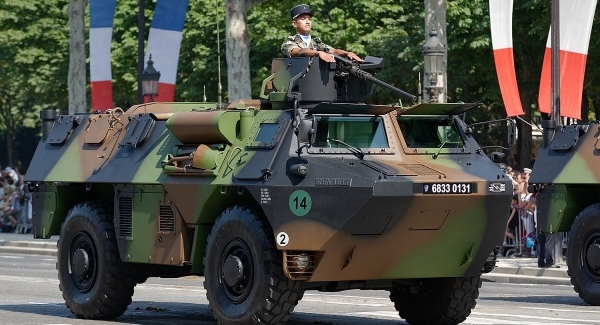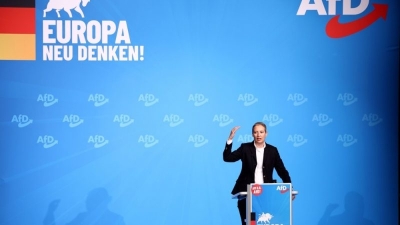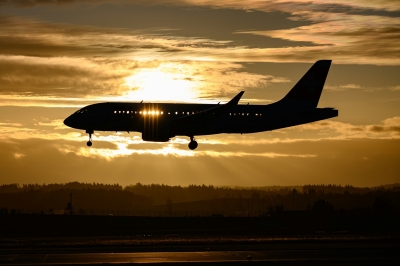France’s Erratic Policy Threatens Stability

According to Sébastien Lecornu, French Minister of the Armed Forces, there is "a slow, progressive, but unfortunately certain increase in pressure" in Lebanon because of Iran’s terrorist proxy, Hezbollah, firing missiles and mortars into Israel. And this could escalate and open a second front while Israel is fighting another Iranian proxy, Hamas in Gaza. “In the Near and Middle East, we are dancing on a volcano,” Lecornu added in an interview with Europe 1-CNews.
Why, then, did Paris decide to provide the Lebanese army with dozens of VAB armoured personnel carriers (APC)? Lecornu claimed that these vehicles will “assist the Lebanese military in their patrol missions within the country”, so that “it could coordinate well with the UNIFIL”. It is common knowledge that Hezbollah is the major military force in Southern Lebanon, the de-facto local government, not to mention the fact that it’s a recognised terrorist organisation, which eventually gets a hold of any weaponry that is supplied to the Lebanese army. Israeli experts have already expressed their “surprise” with this ill-conceived French idea.
“There is a risk that Western military equipment, weapons, and armaments will end up in the hands of Hezbollah to be used against Israel. The weaponry and ammunition were provided to the Lebanese army by the United States, the United Kingdom, France, and other European countries. These include anti-tank missiles, hand-held portable air-defense systems, surveillance equipment, and various electronic systems. They are quite likely to be aimed at Israel in the next conflict,” the Israeli think tank Alma concluded this past June.
US experts second this opinion. “The danger of arming Lebanon is nothing new. In 2016, the Israeli government presented evidence that Hezbollah was using APCs supplied by the United States to the LAF. In July, the ALMA Research and Education Centre reported that weapons and military equipment provided to the Lebanese Army by the United States, United Kingdom, France, and other European countries have slipped into the hands of Hezbollah.
In other words, weapon shipments to the Lebanese military should be considered indirect weapons shipments to terrorists. By supplying the LAF with APCs, Paris is providing Hezbollah with military equipment that the militant group could use against Israel if Hezbollah decides to attack,” Newsweek reported last month.
It made yet another point that France already provided its APCs to Armenia, a Caucasian neighbour and ally of Iran, and has also promised to provide it with three Thales Ground Master 200 radar systems and Mistral anti-air missiles. It is an even more bizarre gesture since Russia has a joint air defense agreement with Armenia that gives Moscow access to this military equipment. Emboldening Russia and Iran, both of which are waging hybrid warfare against Western allies, has been the price France is willing to pay for influence in the South Caucasus. This influence bid is highly questionable, as the region is a playground for Russia, Iran and Turkey.
There is another aspect to these deliveries — related to the Ukrainian conflict, which is already draining economical and military resources. However, it is clear that Russia has much deeper pockets and stockpiles of old Soviet-era military equipment that can be sent to the frontlines in droves. Ukraine is struggling to procure enough armoured vehicles, as Bloomberg notes, because of Europe’s approach of trickling military aid. Because of this, its offensive capabilities are hurting, Forbes reported.
Advertisement
According to the Kiel Institute, which tabulates military aid to Ukraine through July 31, France lags behind many EU countries, having allocated 533 million euros — barely 0.02 percent of GDP. By comparison, Germany has sent 17 billion euros worth of military aid, or 0.4 percent of GDP, and the U.K. has sent 6.6 billion euros, or 0.23 percent of GDP. Even Lithuania is far ahead at 715 million euros, despite its smaller economic capabilities. However, French lawmakers contest the institute’s methodology and estimate that French support actually amounts to 3.2 billion euros.
Meanwhile, Israel’s war with Hamas is effectively diverting the attention of the media and the West towards that region and away from Ukraine. Moscow and the puppet master in Tehran certainly benefit from the latter’s proxy starting this bloody conflict. Ukraine is hoping for a quick Israeli victory so that the West can focus on pushing Russia back. After all, Israel does not require armoured vehicles for its campaign, it only needs US-supplied ammunition for existing systems.
Ukraine, with its latest battlefield stalemates and slow action along the entire frontline, is in a war of attrition. As mentioned above, Russia has huge warehouses full of old and obsolete Soviet-era military vehicles. With modern technology, these old vehicles could still prove useful on the battlefield, especially compared to an army that is gradually running out of armoured vehicles. After all, an old APC from the 1950s will still provide more protection to a platoon of advancing infantry than unarmoured trucks, cars or civilian vehicles. For this reason, Ukraine is turning to the West for military vehicles and equipment. So the APCs sent to Armenia and Lebanon could have been much more useful on the Ukrainian front.
Another questionable deal is the possible sale of the 24 fighter jets, possibly Rafale or Mirage 2000, to Uzbekistan. There is currently no war going on in Central Asia. And last September, the Ukrainians specifically asked France to provide them with exactly the same jets.
So what is really behind such a policy? An attempt to become an independent (from the EU and the US) actor in the Middle East, the Caucasus and Central Asia? Or is France flirting with the enemies of the West?
Share this article:



